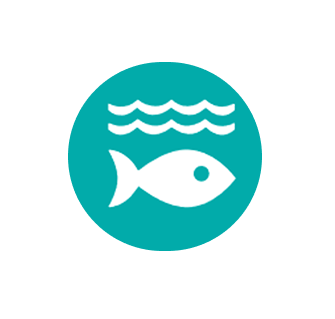Charles Darwin Foundation
NATURAL CAPITAL SOLUTIONS








The Galápagos Islands, renowned worldwide for their unparalleled biodiversity and unique ecosystems, face mounting environmental and human-induced threats. In response to these pressing challenges, Oceans Finance Company (OFC) has established a strategic partnership with the Charles Darwin Foundation (CDF) aimed at advancing crucial long-term conservation initiatives to enhance resilience to climate change in the archipelago and surrounding areas. Below are the programs that OFC is supporting.
The Galápagos Marine Reserve (GMR) harbours unique marine ecosystems with high levels of endemism. However, these ecosystems face growing threats from climate variability, particularly extreme El Niño and La Niña events, which cause rapid shifts in sea surface temperatures and stress to coral reefs and subtidal communities.
This program aims to assess and monitor the resilience of vulnerable reef sites across the GMR to inform more effective conservation and management strategies. Using innovative tools such as 3D reef mapping, AI-assisted image segmentation together with oceanographic monitoring, the program will track changes in coral and benthic communities over time. Results will strengthen climate adaptation strategies locally and contribute to regional cooperation through the Eastern Tropical Pacific Marine Corridor (CMAR).
The marine birds of the Galápagos face threats of climate change, invasive species, pathogens, pollution, bycatch, and antimicrobial resistance placing them at immediate risk of population decline.
This program aims to ensure the long-term conservation of key (sentinel) Galápagos marine bird species by providing critical data on their population status and health to guide effective management and conservation actions by the Galápagos National Park Directorate (GNPD). Key activities include monitoring of 14 nesting sites, capture-recapture studies to assess survival and reproduction, evaluating introduced species population status and diseases and implementing control actions in the marine bird breeding areas.
Creating opportunities for connection and understanding of the natural environment makes the community a key ally for conservation, environmental protection and sustainable development. This program develops and implements
activities that promote environmental awareness, scientific knowledge, and experiential learning amongst young people of the islands.
The program has three main components:
1. Clubs: Establishing youth clubs to promote environmental awareness, leadership and conservation commitment among youth.
2. Experiential science: Linking community groups with scientific research in the Galápagos through the development of an Experiential Science Portfolio, which includes activities connected to CDF’s research projects, environmental issues or school curricula.
3. Encounters - Science and community: Promoting environmental and socio-environmental literacy by sharing scientific knowledge in accessible formats, including the implementation of “Travelling Libraries” in San Cristobal Island, to reach groups with limited access to resources throughout the islands.
Mangroves are the most powerful blue carbon ecosystems on earth, storing far more carbon than most forests, while also shielding coastlines and sustaining fisheries. In Galápagos, these ecosystems support unique and endangered species, provide nursery grounds for fish, and protect communities from storms. Yet they are increasingly at risk. Rising sea levels, stronger storms, shifting rainfall and salinity, local human pressures and introduced species threaten their survival. In the Galápagos, mangroves are classified as a vulnerable ecosystem by the International Union for Conservation of Nature (IUCN), underscoring the urgent need for their conservation action.
This program aims to assess and enhance the role of Galápagos mangroves in climate change mitigation and sustainable fisheries management. Key activities include quantifying their carbon capture, monitoring climate vulnerability, evaluating their role as a nursery for fisheries and key species, and engaging the local communities in conservation. The results will provide policy-relevant data to guide conservation strategies, safeguarding biodiversity, strengthen marine reserve management, and contribute to sustaining local livelihoods in the Galápagos.
One of the Galápagos’ most unique habitats is the Scalesia forest, composed of the giant daisy trees. Once distributed over 10,000 hectares, the forest remnant now only covers, 3% on Santa Cruz Island. Decimated in the past due to agricultural activities, the forest is now threatened by invasive plant species. Research showed that 5% of the Scalesia forest is lost annually due to invasive plants, predicting that it will become extinct in less than 20 years without invasive plant control.
This forest remnant supports more associated plant, and bird and invertebrate species than any other terrestrial ecosystem in the Galapagos. Therefore, this program aims to restore Scalesia forests at scale, safeguarding critical habitat for threatened species, such as Darwin's finches, and maintaining their role as a vital carbon sink. Key activities include controlling invasive plants, planting thousands of nursery-grown Scalesia seedlings, and monitoring vegetation and invertebrate communities. The results will enhance ecosystem resilience, secure long-term carbon sequestration, and support sustainable management with local community involvement.
Hundreds of thousands of tourists visit the Galápagos each year, increasing recreational activities and pressure on marine wildlife. Green sea turtles, a flagship species of the Galápagos Marine Reserve (GMR), are especially at risk. Vessel traffic, habitat degradation and climate change threaten their survival, with up to 19% of turtles near ports and 12% of females nesting at the most important nesting site showing injuries from strikes. To balance the demands of economic growth with conservation needs, it is crucial to identify and mitigate anthropogenic threats early on to protect turtle populations.
This program aims to evaluate the impacts of human activities on sea turtles and design strategies to mitigate them, strengthening both conservation and sustainable tourism. Key activities include mapping overlap between turtles and vessel routes, drone and satellite tracking, collision risk modelling, and climate vulnerability assessments on nesting beaches. The results will guide marine traffic regulations, reduce collision risks, and inform climate adaptation strategies, ensuring long-term protection of turtles and their habitats.
Since 1964, we have been at the forefront of preserving the Galapagos Islands—one of the world’s most unique ecosystems. Today, the Charles Darwin Foundation and its Research Station are the large stand oldest science and conservation organization in the archipelago, generating groundbreaking discoveries and effective conservation focused on protecting the biodiversity of this UNESCO World Heritage Site.